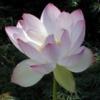-
Posts
2,227 -
Joined
-
Last visited
-
Days Won
7
Content Type
Profiles
Forums
Events
Store
Downloads
Gallery
Posts posted by nagamaki - Franco
-
-
In regards to fit, much will depend upon the time of year and conditions of when the saya was made. Here in the NE USA, what I've experienced is that shirasaya made in this region will fit just fine throughout the year when made in the summer. However, if the shirasaya was made during the winter months, it will fit on the looser side come summer. For shirasaya made on the west coast or Japan during the summer months, come winter here in the NE the shirasaya becomes too tight. No matter what the case may be it means paying close attention, which you should be doing anyway. In recent years the change in weather conditions transitioning from fall to winter have become so sudden, even drastic, 60F one day, 32F the next, that if the sword is fully seated when that happens, it could mean the sword is locked down (safe and secure) until the following Spring.
-
 2
2
-
-
Brian Tschernega
-
Very nice. Almost has an Umetada feel to it in my eye
Thank you. You have a very good eye. Sometimes I think of 'Mito' as being the Xerox of fittings makers.
-
Yep, read those links. In short, NO oil on nakago and tsuba, ever. Regarding the nakago it's not that simple if we consider future generations but leave it til you know what you're doing.
It's ok to use oil on the nakago, use a clean soft absorbent cloth to remove all excess. DO NOT RUB!
Also, if there are any lacquer attributions on the nakago, I would not apply and completely avoid putting any oil on those kinds of features. And, when in doubt don't!
-
 1
1
-
-
Go to the ninonto forum and use the search box at the top of the page inserting the words "uchiko" and "oil", there you'll find many discussions on these topics.
Thank you.
-
 4
4
-
-
Having owned Settsu blades this hada definitely looks Settsu to me. As Bruce Kowalski lectured don't overlook mumei wakizashi.
-
-
Thank you for sharing, congrats, and 3 cheers for your brain and liver. Having tried and finally giving up, yes, a very difficult task to accomplish. 'It's the swords/koshirae that find the owner.'
-
Flaws within the hamon certainly detract visually and value wise, and in terms of restoration you would have to learn to live with them. Above the hamon flaws sometimes can be tightened up by the polisher, and sometimes they'll open up under polishing. Once again, it's best to understand the NBTHK standards for papering and how they would apply to the sword in question. In that way you can at least make somewhat of an informed decision, evaluation.
-
Congratulations and thanks for sharing.
Could you tell us who handled the submission for you?
Custom box making?
Thank you
-
A place to begin answering some of your questions ... http://www.nihontocraft.com/Nihonto_Shinsa_Standards.html
-
 1
1
-
-
No worries.
-
Jean-Pierre,
I said made from "hand forged machine steel", "water quenched." Please read more carefully. Thank you.
-
1. A Microdear cloth with anhydrous 99% + Isopropyl alcohol is the way to go, especially on polished swords or swords in good condition.
2. A Microdear cloth can be washed, use a fragrance free baking soda based detergent. I use Arm and Hammer.
3. If using uchiko, wipe only once and in one direction. Uchiko can and will scratch if not used absolutely properly! And while many of these scratches are too fine to see under normal conditions, a very bright light and especially a quartz light will leave many sword owners regretting ever having used uchiko.
4. Care instructions should have been given with the sword.
-
 1
1
-
-
Quick comments (that could be mistaken); WWII officers sword, missing tassel, do not see military acceptance stamp(?), hand forged machine steel, water quenched (nioi), WWII polish, Mino tradition sword(?), interesting to see curvature continue into the nakago.
-
 1
1
-
-
Chinese reproduction? That bo hi almost scares me more than the mei at this point.
-
-
Hello,
Dwain, you and others may find 'An Early Style of A Japanese Sword' A Search for The Origin of The Curve exhibition catalog of some interest. Mine came from Bob Benson originally.
-
 2
2
-
-
Takeo Seki in BC Canada and Shigekazu "Jimmy" Hayashi in San Francisco are both fully trained polishers. While Jimmy would be my first choice, Takeo would almost certainly have a shorter wait time for his service. I have used both polishers multiple times and highly recommend.
Also, the dragon menuki 'appear' to be of very good quality.
http://www.nihontocraft.com/Jimmy_Hayashi_Sword_Polisher.html
-
 2
2
-
-
Hey Ken,
Chill out.
-
 2
2
-
-
TCM is showing 3 classic samurai movies right now/tonight. Often they will show again in the same week/month if you miss this post.
-
 3
3
-
-
Although posted before, people may now have the time to read this book.
 Stay well.
Stay well.-
 5
5
-
-
Sesko's; Meikan - Sword Fittings
Meikan Kōami (功阿弥) Kōchō (晄長)
late name of Gunji Yogorō (軍地与五郎)
Looks OK.
-
 4
4
-
-
and thank you, much appreciated.



The cup is always full
in General Nihonto Related Discussion
Posted
In hindsight it seems nearly impossible to begin understanding the writings of someone like an Albert Yamanaka without having actual 'text book' examples to study in hand.